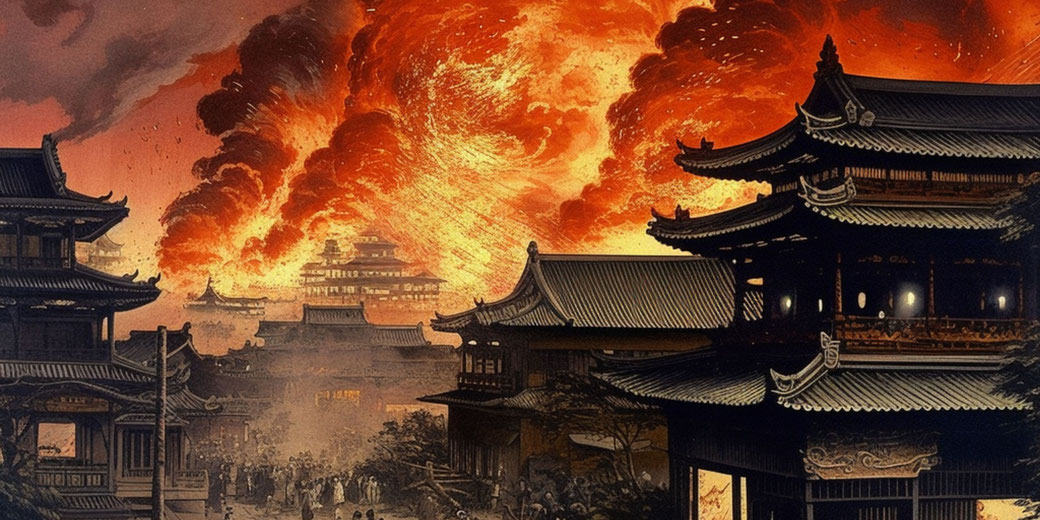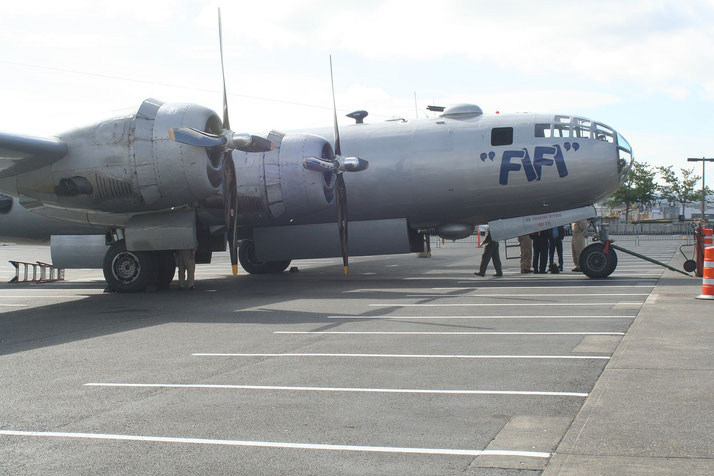Aerial inferno: The devastating firebombing of Tokyo in the closing stages of WWII

On the night of 9 March 1945, Tokyo became the site of one of the most destructive air raids in history. Operation Meetinghouse, as it was known to the United States Army Air Forces, released a wave of incendiary bombs that burned through entire neighbourhoods.
Fires swept across the wooden homes of the city and killed tens of thousands in only a few hours. By dawn, much of the Japanese capital had turned to ash.
Japan's role in WWII
During the 1930s, Japan pursued an aggressive expansion policy that set the nation to clash with Western powers, especially the invasion of Manchuria in 1931 and the full-scale war against China in 1937.
In 1940, Japan improved its alliance by signing the Tripartite Pact with Nazi Germany and Fascist Italy.
After the attack on Pearl Harbor on 7 December 1941, the United States entered the war and the fighting expanded across the Pacific.
By early 1945, Japan faced increasing military losses on multiple fronts. After the capture of Saipan, Guam, and Tinian in mid-1944, American bombers gained bases that placed the home islands in range.
In the following months, Allied submarines cut shipping routes and deprived Japan of vital supplies.
With cities largely built of wooden structures, like the capital Tokyo, American planners saw that firebombing could destroy them easily.
They believed that such destruction would cripple industry and force Japan toward surrender.
Operation Meetinghouse: Planning the firebombing
At the start of 1945, the United States Army Air Forces changed its strategy. High-altitude precision bombing of factories had produced few results as weather conditions and jet stream winds reduced accuracy.
In response, General Curtis LeMay, commander of the XXI Bomber Command, ordered low-altitude bombing missions using incendiary weapons.
B-29 bombers would release thousands of firebombs to create massive blazes.
Robert McNamara, who later became a prominent American statesman, worked as a statistical analyst for LeMay’s command and contributed to the evaluation of bombing tactics, though he did not directly plan the raid itself.
For Operation Meetinghouse, planners prepared a mission aimed at causing maximum destruction.
The bombs contained incendiary mixtures, including napalm, and the M-69 cluster incendiary devices that could ignite wooden buildings with intense heat.
On target maps, working-class districts of Tokyo appeared to be ideal sites due to their tightly packed wooden houses.
Therefore, mission orders directed pilots to follow a pattern of bombing that covered the area so that fires would merge into large firestorms.
On the night of 9 March, 346 B-29 bombers departed from bases in the Mariana Islands, and flew as low as 5,000 to 9,000 feet to be as accurate as possible.
279 of them hit their targets, dropping about 1,665 tons of incendiary bombs.

The horrific civilian slaughter of the bombings
Shortly after midnight, the first bombs struck Tokyo. As incendiary clusters exploded, houses ignited within seconds.
Under strong winds, the fires grew into a firestorm that tore through the city. In desperation, people ran toward rivers and canals, where many drowned in the attempt to escape the flames.
Others suffocated as the fires consumed oxygen and left the air unbreathable.
Survivor accounts described unbearable heat, the smell of burning flesh, and rivers clogged with bodies.
By morning, estimates suggested that roughly 80,000 to 100,000 civilians were dead and more than one million people had lost their homes.
The raid became the deadliest single air raid of the war, killing more people than the atomic bombing of Hiroshima and a similar or greater number than in Nagasaki.
The attack destroyed about 16 square miles of Tokyo and destroyed around 267,000 buildings.
Across the city, ash and the charred bodies of residents covered the streets.
Did the bombings have the intended effect?
In the minds of American planners, the destruction of Japan’s cities would cripple its industry and morale.
While the firebombing of Tokyo wiped out thousands of small factories that produced war materials and shocked the Japanese government, surrender did not come immediately.
Over the next few months, similar raids struck Nagoya, Osaka, Kobe, and numerous other cities.
Hundreds of thousands more civilians died as Japan’s cities turned to ruins, and industry collapsed as transport networks failed and displaced workers fled to rural regions.
By mid-1945, Japan had lost much of its ability to sustain the war, yet its leaders still refused to accept unconditional surrender.
The firebombings weakened Japan significantly, but they did not end the conflict before the atomic bombs were used on Hiroshima and Nagasaki in August.
The post-war reconstruction of modern Tokyo
At the end of the war, Tokyo lay in ruins. Across vast districts, rubble stretched as far as the eye could see, and millions of people were without homes.
Under the Allied Occupation, Japan relied on American aid to rebuild its cities.
Rebuilding work included plans for wider roads and firebreaks to reduce the risk of future disasters, but shortages of materials and labour slowed the process for several years.
In the years that followed, economic reforms and updating industry transformed the nation.
With new democratic institutions in place, Japan entered a period of rapid growth.
By the time of the 1964 Tokyo Olympics, the city had become a symbol of Japan’s recovery and return to the international community.
Although survivors carried the memories of the firebombing, the rebuilt city became a powerful example of Japan’s recovery.
Was the mass killings of civilians morally justified?
For decades, historians and ethicists have debated the morality of the firebombing of Tokyo.
Supporters argued that the raid shortened the war and spared lives that would have been lost in a land invasion.
They highlighted Japan’s refusal to surrender and the ferocity of battles at Iwo Jima and Okinawa as proof that overwhelming force was necessary.
Opponents contended that the deliberate killing of civilians was regarded as a war crime.
Admiral William Leahy and other senior officials later expressed serious doubts about the morality of the bombing, and that the suffering of the population far outweighed any direct military benefit.
Ultimately, the destruction of Tokyo and other Japanese cities forced the world to confront the ethics of strategic bombing and the limits of acceptable wartime conduct.
Operation Meetinghouse became one of the clearest examples of the severe cost of total war and influenced later discussions that helped lead to the 1949 Geneva Conventions.
What do you need help with?
Download ready-to-use digital learning resources
Copyright © History Skills 2014-2025.
Contact via email
With the exception of links to external sites, some historical sources and extracts from specific publications, all content on this website is copyrighted by History Skills. This content may not be copied, republished or redistributed without written permission from the website creator. Please use the Contact page to obtain relevant permission.





